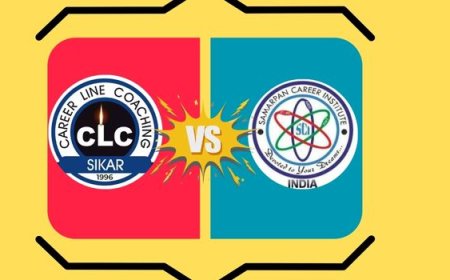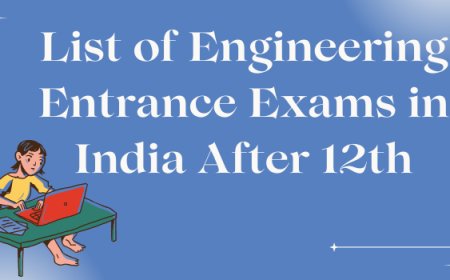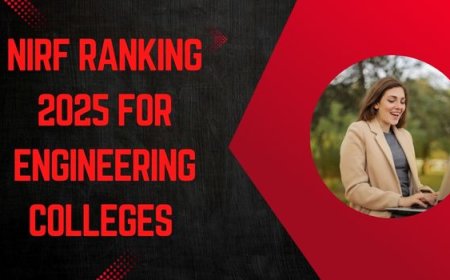Minimum Percentile for NIT Colleges (Category-Wise & Course-Wise): Previous Year Trend
Explore category-wise & course-wise minimum percentile trends for NITs (2020–2024). Know cutoffs for CSE, ECE, ME, CE & more.

Minimum Percentile for NIT Colleges: Getting into NITs through JEE Main is tough competition! For those aspiring to join these esteemed institutions, knowing the minimum percentile required—both by category and branch—is essential. Each NIT sets its cutoff, influenced by factors like its popularity, location, and the demand for specific branches such as Computer Science, Electronics, or Mechanical Engineering.
In this detailed article, we’ll dive into the minimum JEE Main percentiles needed for admission into NITs, categorized by General, OBC, SC, ST, and EWS, as well as by branch/course like CSE, ECE, Mechanical, Civil, and more, using data from past JoSAA counseling sessions.
Read More: Highest Package of IIT 2025
What is the Minimum Percentile in JEE Main?
The minimum percentile is the lowest score a candidate must achieve to qualify for admission into any NIT through JoSAA (Joint Seat Allocation Authority) counseling. This cutoff percentile changes every year based on several factors, including:
- The total number of candidates
- The difficulty level of the exam
- The number of available seats
- The candidate's category (GEN, OBC-NCL, SC, ST, EWS)
- Home State (HS) versus Other State (OS) quota
JoSAA Seat Allocation: Understanding Category-wise Cutoff
JoSAA publishes the opening and closing ranks for each counseling round. The closing rank from the final round (Round 6 or 7) reveals the minimum rank—and thus the percentile—needed to gain admission into a specific branch at a particular NIT.
Minimum Percentile for NIT Admission Category-wise
|
Category |
Lowest Percentile |
Approx Rank |
|
General - Open |
88 - 90 |
1,10,000 - 98,000 |
|
OBC-NCL |
73-79 |
1,80,000-1,50,000 |
|
SC |
52-58 |
3,00,000-2,50,000 |
|
ST |
40-45 |
4,00,000-3,50,000 |
|
EWS |
76-84 |
1,50,000-1,30,000 |
|
PwD |
3-10 |
Varies |
Check Out: Which NIT Can You Get with JEE Main 2025 Percentile & Rank?
Minimum Percentile for NITs – Branch-wise & Category-wise
Let's dive into the course-wise minimum percentiles for major engineering branches, based on the closing ranks from last year (2023–2024) converted into approximate percentiles.
1. Computer Science and Engineering (CSE)
CSE is the most sought-after branch, with general candidates needing a whopping 98.5+ percentile to secure a spot in the top NITs.
|
NIT |
General |
OBC-NCL |
SC |
ST |
EwS |
|
NIT Trichy |
99.2 |
98.2 |
92 |
88 |
98.5 |
|
NIT Rourkela |
98.3 |
96.8 |
89 |
84 |
97 |
|
NIT Surathkal |
99.3 |
98 |
91 |
87 |
98.3 |
|
NIT Warangal |
99.5 |
98.4 |
93 |
89 |
98.6 |
|
NIT Silchar |
96 |
92 |
80 |
75 |
93 |
|
NIT Mizoram |
91 |
85 |
65 |
57 |
86 |
2. Electronics and Communication Engineering (ECE)
ECE also has high cutoffs, especially among the top 5 NITs, where a percentile of around 97+ is typically required for general candidates.
|
NIT |
General |
OBC-NCL |
SC |
ST |
EwS |
|
NIT Trichy |
98.7 |
97.6 |
89 |
84 |
97.5 |
|
NIT Rourkela |
97.5 |
95.8 |
85 |
76 |
95.3 |
|
NIT Surathkal |
99.3 |
98 |
91 |
87 |
98.3 |
|
NIT Warangal |
98.5 |
97.3 |
90 |
85 |
97 |
|
NIT Agartala |
93 |
88 |
65 |
70 |
89 |
3. Mechanical Engineering (ME)
Mechanical Engineering has seen a dip in competitiveness lately; you might find a place in newer NITs with a percentile between 90 and 91.
|
NIT |
General |
OBC-NCL |
SC |
ST |
EwS |
|
NIT Trichy |
97 |
95 |
84.4 |
82 |
76 |
|
NIT Warangal |
96.8 |
94.5 |
83 |
77 |
94.7 |
|
NIT Surathkal |
96.5 |
94.2 |
91 |
81 |
94 |
|
NIT Nagaland |
89 |
80 |
58 |
47 |
81 |
|
NIT Jamshedpur |
92 |
87 |
68 |
60 |
88 |
4. Civil Engineering (CE)
Civil Engineering tends to have lower cutoff percentiles, particularly in the NITs located in the North-East.
|
NIT |
General |
OBC-NCL |
SC |
ST |
EwS |
|
NIT Trichy |
97 |
95 |
84.4 |
82 |
76 |
|
NIT Rourkela |
93 |
89 |
74 |
68 |
89 |
|
NIT Surathkal |
94 |
91 |
76 |
69 |
91.4 |
|
NIT Arunachal |
89 |
80 |
56 |
45 |
81 |
5. Electrical Engineering (EE)
Electrical Engineering cutoffs are a bit lower than ECE, but you’ll still need a 95+ percentile to get into the top NITs.
|
NIT |
General |
OBC-NCL |
SC |
ST |
EwS |
|
NIT Trichy |
97.9 |
96.1 |
86 |
80 |
96.4 |
|
NIT Calicut |
96.2 |
93. |
82 |
75 |
93.8 |
|
NIT Warangal |
98 |
96.5 |
87 |
81 |
96.9 |
|
NIT Arunachal |
90 |
85 |
60 |
50 |
86 |
|
NIT Jalandhar |
93.5 |
88 |
72 |
65 |
89 |
Key Highlights of minimum percentile for NIT colleges
The minimum percentile for NIT colleges can vary quite a bit depending on your category and course preference. Here’s a quick rundown:
For top branches like CSE and ECE, aim for a 98+ percentile (General).
For core branches like Mechanical or Electrical, a 95+ percentile is usually enough.
For Civil, Metallurgy, or Biotechnology, you can still get in with an 89–91 percentile in newer NITs.
Students from reserved categories (OBC, SC, ST, EWS) enjoy significantly lower cutoffs.
How State Quota Impact on Minimum Percentile?
Each NIT sets aside 50% of its seats for candidates from the home state, which significantly impacts the cutoff percentiles. For instance:
A candidate from Nagaland stands a better chance of getting into NIT Nagaland with a lower percentile compared to someone from outside the state.
On the other hand, NIT Trichy in Tamil Nadu has higher percentile requirements even for local candidates because of the intense competition.
Top NITs vs Newer NITs: A Percentile Comparison
|
NIT |
Minimum Percentile |
Popular Branch |
|
NIT Trichy |
98.5+ |
CSE |
|
NIT Rourkela |
97+ |
ECE |
|
NIT Surathkal |
98.2+ |
CSE |
|
NIT Warangal |
98.6+ |
CSE |
|
NIT Silchar |
93+ |
Mechanical |
|
NIT Sikkim |
89+ |
Civil |
Previous Year Category-Wise Minimum Percentile Trends
Let’s take a look at the minimum JEE Main percentiles required for admission to any NIT in previous years, based on closing ranks and the rank-percentile mapping. The trends from last year show that cutoffs can vary quite a bit across different categories. Generally, students from the General category need to achieve higher percentiles, while those from reserved categories like OBC, SC, and ST face comparatively lower cutoffs. These variations are shaped by factors such as seat availability, branch demand, and the overall performance of candidates each year.
JEE Main 2024 – Minimum Percentile Trends (Approximate)
|
NIT & Branch |
General |
OBC-NCL |
EWS |
SC |
ST |
|
NIT Trichy- CSE |
99.4 |
98 |
97.2 |
92 |
88 |
|
NIT Rourkela- CSE |
98.6 |
96.3 |
95 |
88 |
83 |
|
NIT Surathkal- CSE |
99.3 |
97.3 |
97.9 |
91 |
87 |
|
NIT Warangal- ME |
99.2 |
97 |
98 |
91.5 |
87.9 |
|
NIT Calicut- CE |
98.5 |
95 |
96.5 |
89 |
83 |
JEE Main 2023 – Minimum Percentile Trends
|
NIT & Branch |
General |
OBC-NCL |
EWS |
SC |
ST |
|
NIT Trichy- CSE |
99.8 |
97.5 |
98 |
91.6 |
87 |
|
NIT Rourkela- CSE |
98.3 |
96 |
94.7 |
88 |
83 |
|
NIT Surathkal- CSE |
99 |
97 |
97.7 |
91 |
86.2 |
|
NIT Warangal- ME |
99 |
97.1 |
97.9 |
91 |
86 |
|
NIT Calicut- CE |
94 |
91 |
89 |
77 |
69 |
JEE Main 2022 – Minimum Percentile Trends
|
NIT & Branch |
General |
OBC-NCL |
EWS |
SC |
ST |
|
NIT Trichy- CSE |
99.1 |
97.3 |
97.9 |
91 |
87 |
|
NIT Rourkela- CSE |
98 |
94 |
95 |
87 |
81 |
|
NIT Surathkal- CSE |
99 |
97 |
97.7 |
90.6 |
86 |
|
NIT Warangal- ME |
95 |
93 |
94.8 |
80 |
73 |
JEE Main 2021 – Minimum Percentile Trends
|
NIT & Branch |
General |
OBC-NCL |
EWS |
SC |
ST |
|
NIT Trichy- CSE |
99 |
97 |
97.8 |
90 |
85 |
|
NIT Rourkela- CSE |
97.8 |
95.5 |
93.7 |
86 |
80 |
|
NIT Surathkal- CSE |
98.1 |
96.7 |
97.3 |
89 |
81 |
|
NIT Warangal- ME |
98.8 |
93.8 |
96.9 |
86 |
80 |
JEE Main 2020 – Minimum Percentile Trends
|
NIT & Branch |
General |
OBC-NCL |
EWS |
SC |
ST |
|
NIT Trichy- CSE |
99.7 |
96.3 |
97.2 |
90 |
85 |
|
NIT Rourkela- CSE |
98 |
94 |
95.5 |
85 |
80.7 |
|
NIT Surathkal- CSE |
99 |
96 |
97.3 |
89.8 |
80.1 |
|
NIT Warangal- ME |
99 |
96.3 |
97.4 |
89 |
84 |
CSAB Special Rounds – Last Chance Admissions
Many students secure seats during the CSAB 2025 Special Rounds, which take place after the JoSAA counseling. Percentiles tend to drop even further in these rounds.
Consider the CSAB Special Rounds – these rounds help fill vacant seats and often have lower cutoffs.
Look into IIITs or GFTIs – they might have more lenient cutoffs for certain branches.
Applying to State Government Colleges is also an option, especially if you’re using your JEE Main scores (like HBTU Kanpur or DTU for students from Delhi).
Private Engineering Colleges are another avenue, as many accept JEE Main percentiles and offer scholarships.
Here’s an example from 2023:
NIT Sikkim – Civil Engineering – General (Outside State): 88.9 percentile
NIT Mizoram – Biotechnology – OBC: 72 percentile
NIT Nagaland – Electrical and Electronics Engineering – SC: 50 percentile
So, if you miss the JoSAA cutoffs, don’t lose hope with CSAB – you might still land a seat at an NIT.
Conclusion
The minimum percentile for NIT colleges can vary quite a bit depending on your category and course preference. Here’s a quick rundown:
For top branches like CSE and ECE, aim for a 98+ percentile (General).
For core branches like Mechanical or Electrical, a 95+ percentile is usually enough.
For Civil, Metallurgy, or Biotechnology, you can still get in with an 89–91 percentile in newer NITs.
Students from reserved categories (OBC, SC, ST, EWS) enjoy significantly lower cutoffs.
What's Your Reaction?































